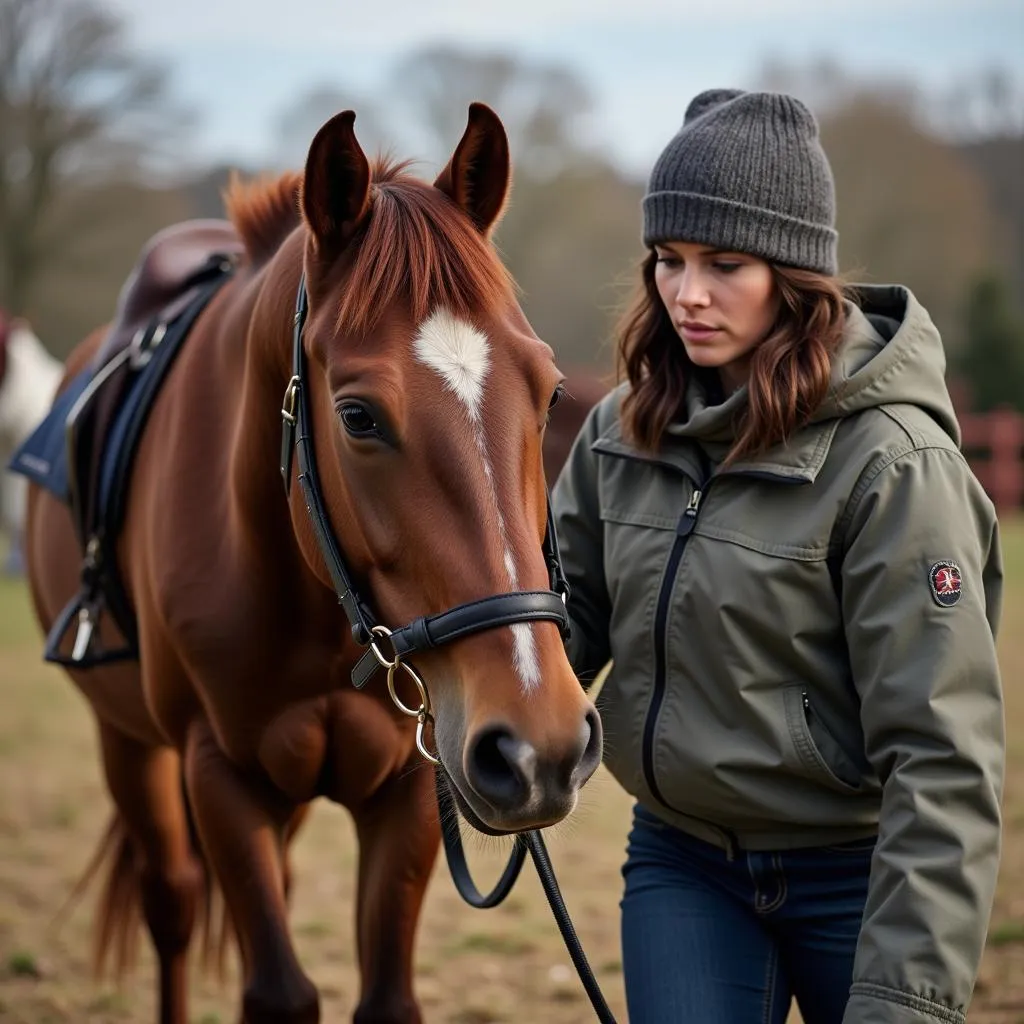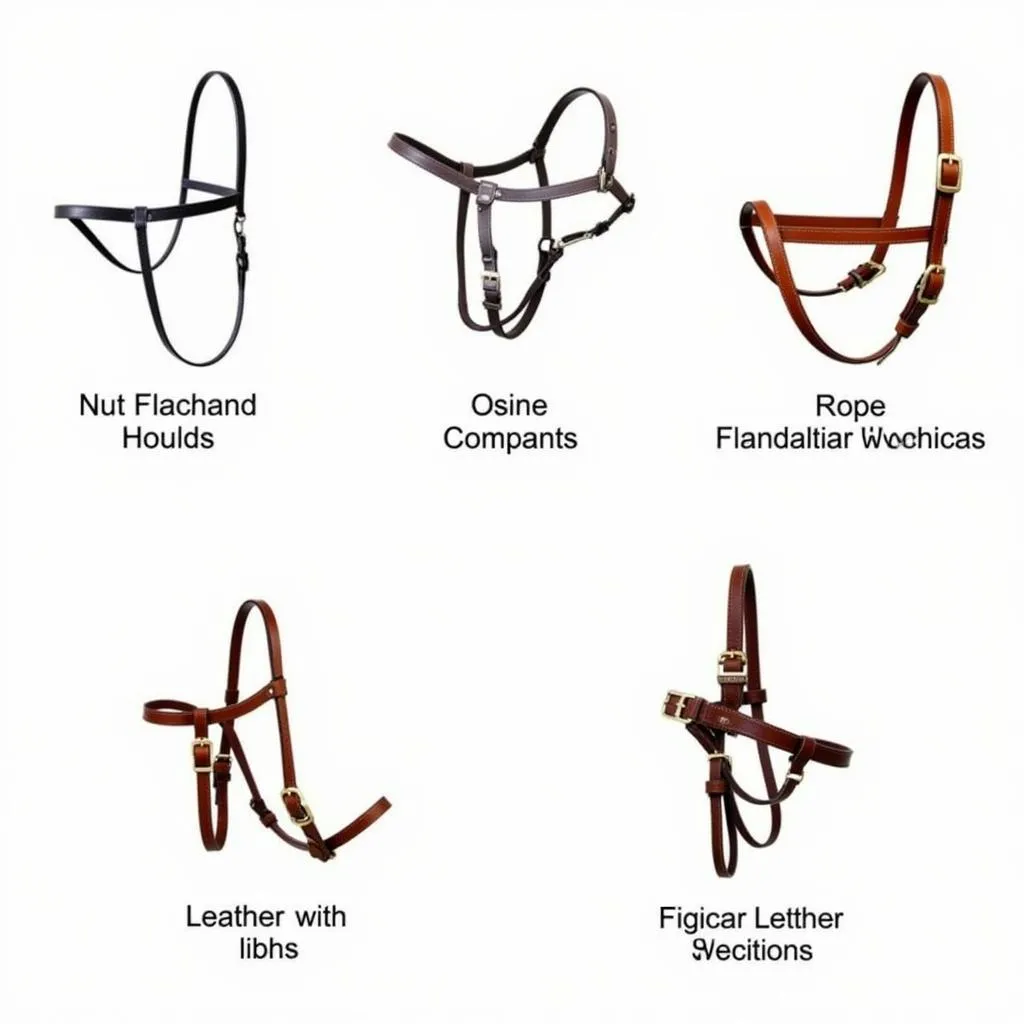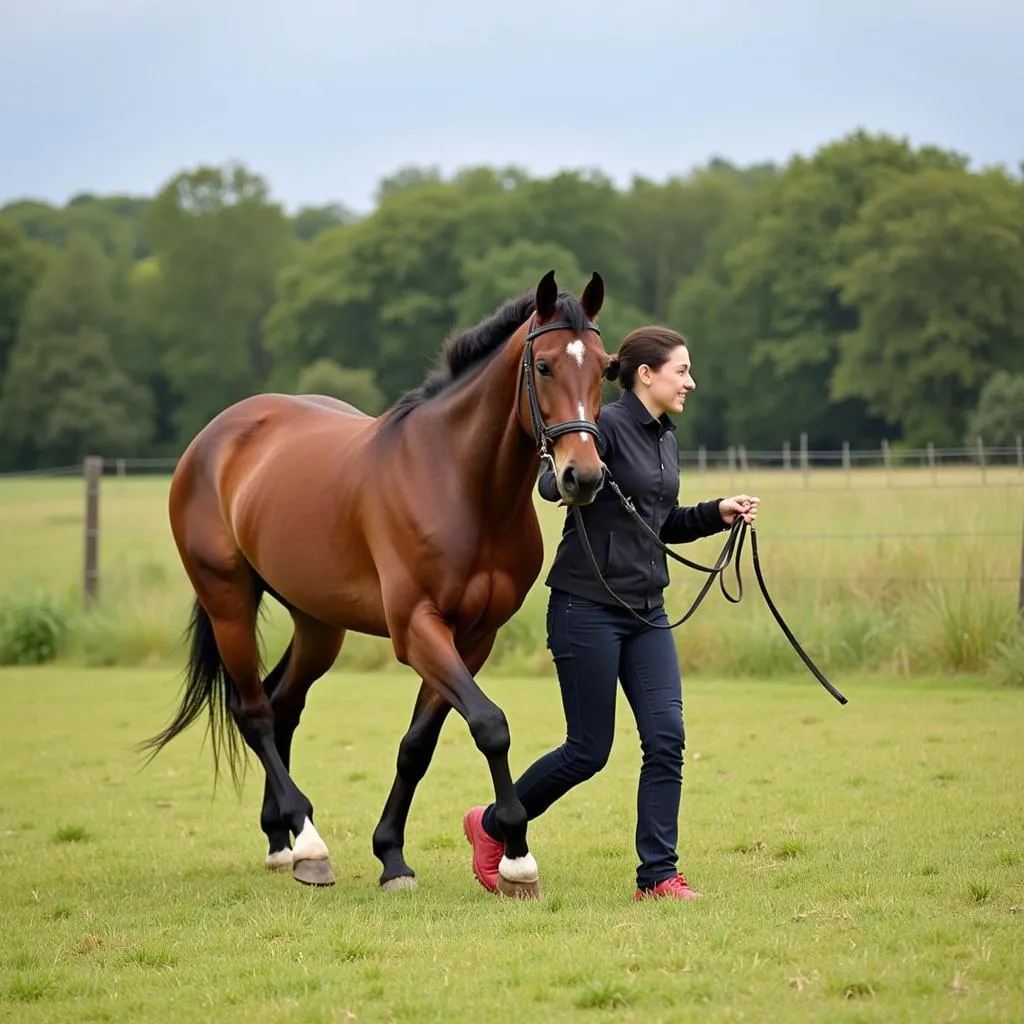A Horse Leader plays a crucial role in ensuring the safety and well-being of both horses and handlers. This comprehensive guide delves into the essential skills and knowledge needed to become a confident and responsible horse leader. From understanding equine behavior to mastering leading techniques, we’ll equip you with the tools to build a strong and trusting relationship with your equine companion.
 Horse Being Led by Handler
Horse Being Led by Handler
The Importance of Proper Horse Leading
Leading a horse safely and effectively is fundamental to responsible horse ownership. Whether you’re guiding your horse to the pasture, preparing for a ride, or navigating a crowded showground, proper leading techniques are essential for:
- Preventing Accidents: A well-trained horse leader can anticipate and prevent dangerous situations, keeping both horse and handler safe.
- Building Trust: Consistent and gentle leading builds a foundation of trust and respect between horse and human.
- Facilitating Training: Leading is an integral part of groundwork and training, teaching horses to respond to cues and pressure.
- Ensuring Smooth Handling: Proper leading ensures horses are cooperative and manageable during veterinary visits, farrier appointments, and other handling procedures.
Essential Equipment for Horse Leading
Before you begin leading your horse, it’s crucial to have the right equipment:
- Halter: Choose a well-fitted halter made of durable material like leather or nylon.
- Lead Rope: A sturdy lead rope, typically 10-12 feet long, provides adequate control while allowing for safe distance.
- Gloves (Optional): Gloves protect your hands from rope burn and provide a better grip.
- Whip (Optional): A dressage whip can be used as an extension of your arm to reinforce cues, but should never be used for punishment.
 Different Types of Horse Halters
Different Types of Horse Halters
Mastering the Art of Leading a Horse
Leading a horse is more than just holding onto a rope. It requires clear communication and understanding of equine behavior. Here are some key techniques:
1. Approaching Your Horse:
- Approach Calmly: Horses are prey animals and can easily be startled. Approach calmly and confidently, speaking in a soothing voice.
- Maintain a Safe Distance: Avoid approaching a horse directly from the front or rear, as these are blind spots.
- Use Your Body Language: Horses are highly attuned to body language. Stand tall and relaxed, avoiding sudden movements.
2. Halter and Lead Rope Handling:
- Secure the Halter: Ensure the halter is properly fitted and fastened.
- Hold the Lead Rope Correctly: Hold the lead rope close to the halter, with your hand in a relaxed position. Avoid wrapping the rope around your hand.
- Maintain a Safe Distance: Walk beside your horse’s shoulder, maintaining a safe distance to avoid being stepped on.
3. Leading Cues:
- Use Gentle Pressure: Apply gentle pressure on the lead rope to encourage your horse to move forward.
- Release Pressure as a Reward: As soon as your horse responds to the cue, release the pressure on the lead rope as positive reinforcement.
- Use Voice Commands: Pair leading cues with consistent voice commands such as “walk” or “whoa.”
 Horse and Handler Walking Together
Horse and Handler Walking Together
Common Challenges and Solutions
- Pulling Back: If your horse pulls back, do not pull against the pressure. Instead, maintain a steady hold on the lead rope and use a calming voice.
- Rushing Ahead: If your horse rushes ahead, use a gentle tug on the lead rope to slow them down and regain control.
- Spooking: If your horse spooks, remain calm and offer reassurance. Once they settle, continue leading calmly.
Conclusion
Becoming a confident and responsible horse leader takes time, patience, and consistent practice. By understanding equine behavior, mastering essential leading techniques, and addressing common challenges, you can build a strong and trusting partnership with your horse, ensuring safe and enjoyable handling experiences for years to come.
FAQs:
Q: How long does it take to teach a horse to lead?
A: The time it takes to teach a horse to lead varies depending on the horse’s age, temperament, and previous training. With consistent training, most horses can learn to lead within a few sessions.
Q: What are some common mistakes to avoid when leading a horse?
A: Common mistakes include wrapping the lead rope around your hand, approaching the horse aggressively, and using inconsistent cues.
Q: Can I lead my horse from both sides?
A: Yes, it’s beneficial to teach your horse to lead from both the left and right sides for versatility in handling.
Q: What should I do if my horse is afraid to be led?
A: If your horse is fearful, work with a qualified trainer to address any underlying behavioral issues and build their confidence.
Q: How do I introduce leading to a young or untrained horse?
A: Start with basic groundwork exercises to establish trust and teach the horse to yield to pressure before introducing the halter and lead rope.
Need Help with Your Horse?
Justus Horses USA is here to support you and your equine companion. Contact us today for expert advice, training resources, and premium horse care products.
Phone: 0772127271
Email: [email protected]
Address: QGM2+WX2, Vị Trung, Vị Thuỷ, Hậu Giang, Việt Nam.